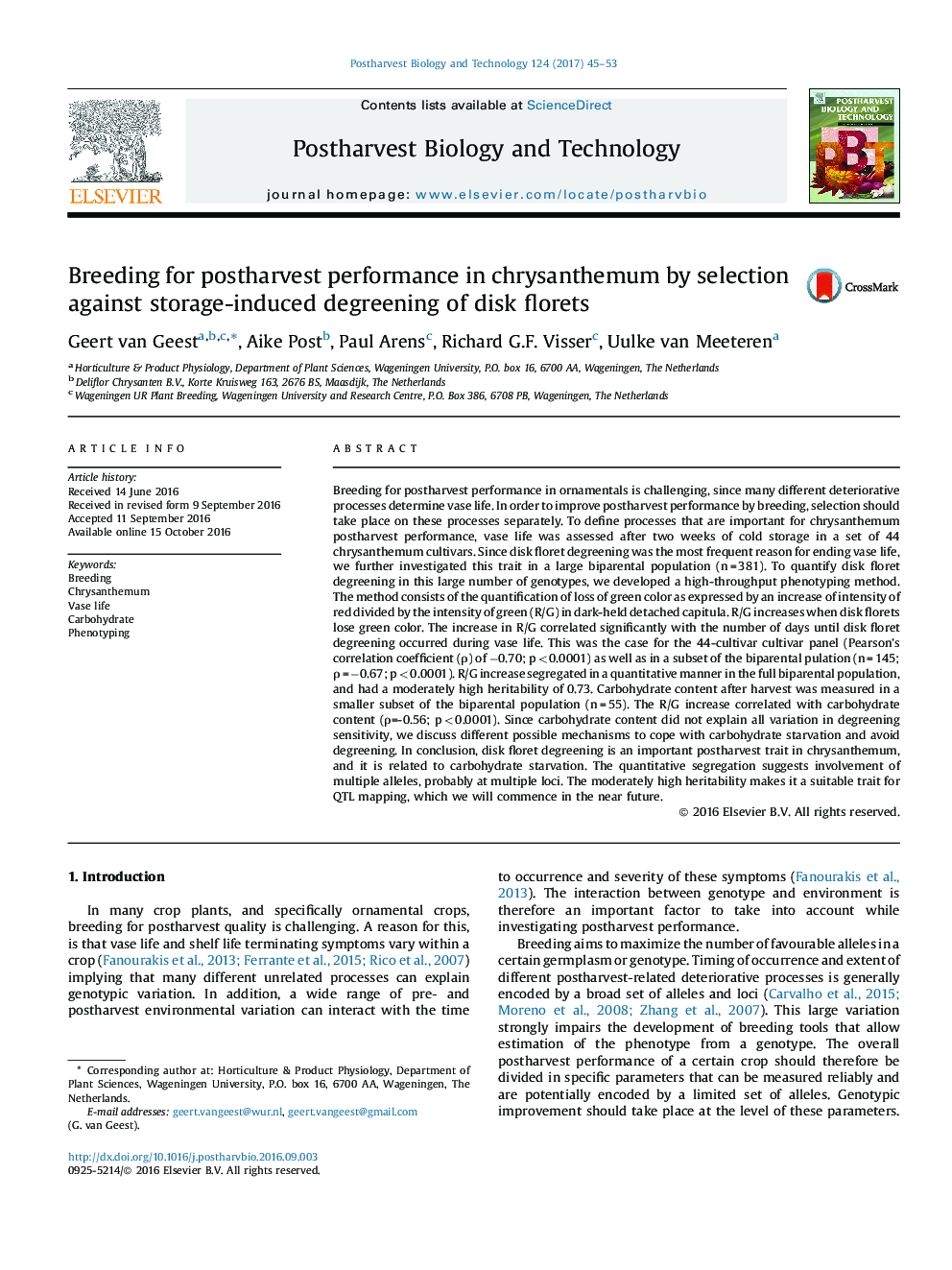| Article ID | Journal | Published Year | Pages | File Type |
|---|---|---|---|---|
| 4517655 | Postharvest Biology and Technology | 2017 | 9 Pages |
•Vase life terminating symptoms after storage are diverse in chrysanthemum.•Disk floret degreening was the most important terminating symptom.•We assessed sensitivity to disk floret degreening in a high throughput manner.•Sensitivity was correlated to carbohydrate content in a biparental population.•The trait can be used for QTL mapping to improve postharvest performance.
Breeding for postharvest performance in ornamentals is challenging, since many different deteriorative processes determine vase life. In order to improve postharvest performance by breeding, selection should take place on these processes separately. To define processes that are important for chrysanthemum postharvest performance, vase life was assessed after two weeks of cold storage in a set of 44 chrysanthemum cultivars. Since disk floret degreening was the most frequent reason for ending vase life, we further investigated this trait in a large biparental population (n = 381). To quantify disk floret degreening in this large number of genotypes, we developed a high-throughput phenotyping method. The method consists of the quantification of loss of green color as expressed by an increase of intensity of red divided by the intensity of green (R/G) in dark-held detached capitula. R/G increases when disk florets lose green color. The increase in R/G correlated significantly with the number of days until disk floret degreening occurred during vase life. This was the case for the 44-cultivar cultivar panel (Pearson’s correlation coefficient (ρ) of −0.70; p < 0.0001) as well as in a subset of the biparental pulation (n = 145; ρ = −0.67; p < 0.0001). R/G increase segregated in a quantitative manner in the full biparental population, and had a moderately high heritability of 0.73. Carbohydrate content after harvest was measured in a smaller subset of the biparental population (n = 55). The R/G increase correlated with carbohydrate content (ρ=-0.56; p < 0.0001). Since carbohydrate content did not explain all variation in degreening sensitivity, we discuss different possible mechanisms to cope with carbohydrate starvation and avoid degreening. In conclusion, disk floret degreening is an important postharvest trait in chrysanthemum, and it is related to carbohydrate starvation. The quantitative segregation suggests involvement of multiple alleles, probably at multiple loci. The moderately high heritability makes it a suitable trait for QTL mapping, which we will commence in the near future.
